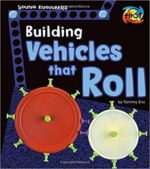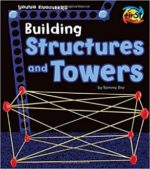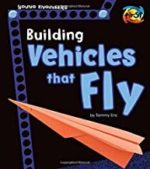



Many of the books I am reading and reviewing this year fit easily into a homeschooling environment and include both fiction and non-fiction selections. I am homeschooling my five-year-old grandson so my thoughts reflect his responses to the books and activities as well as my own.
He’s a kid that loves to build in any and every medium possible so this “Young Engineer” series really appealed to him. The text (with a bit of editing on the fly as I read to him) was informative and held his interest. The activities completely engaged him. They were easily made and used materials that we had on hand. I am an avid recycler, so we had lots of materials from which to choose.
Suggestion:
Google the term “maker space” for lots of ideas on how to learn through making things out of “found items.”
Kids learn best when
an activity entertains as well as informs. These books present many ideas and projects that also get kids thinking about “what if” variations. They will move beyond rigid right/wrong solutions to the excitement and possibility of improving, redesigning, and reinventing the suggested project. Along the way, they will explore–and interact with–scientific concepts in a hands-on way that enhances learning and encourages discovery.
Equally important, the activities are also intriguing for the adult supporting the child. Remember don’t tell them what will happen. Awaken their curiosity with questions, e.g., What will happen if… or Can you think of a different way to do that? and What if you changed one thing…?
Adoption Attuned Lens
Just about any homeschooling activity can provide a gateway to an adoption-sensitive question. It doesn’t even have to mention adoption. AS you explore and build point out how even small changes can create big shifts. If the child appears open to it, ask him to talk about how something caused a big shift in his/her life, e.g., changing schools, a new house, a friend moves… To where would you like to fly? Where would you like to build a bridge? Who would you visit in your vehicle…”
Attune
to your child’s willingness to go to a deeper level and talk about some of the What ifs of adoption. If they seem open and ready, take the conversation there. Take your cue from your child. As soon as they show discomfort, back off. Keep your tone and body language warm and inviting. Research has shown that adopted children think about such things and often don’t know how to raise them with their parents. Reassure them of your willingness with your words and actions.
What if you were adopted by someone else?
What if you were not adopted and remained with your birth family?
Remember, the most important homeschooling lesson is that home is where you learn how to build safe loving relationships.

